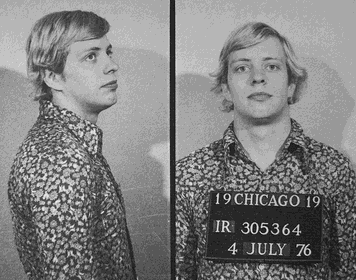Phillip Ronald Paske‘s story starts out pretty grim. Born on June 11, 1953, he’s infamous for his criminal record in Chicago, Illinois. With a “bad complexion” and a fiery temper, Paske stood out early, frequently cross-dressing, which only added to his notoriety in the 1970s.
Run-ins with the law were almost a routine for him. The big moment came in 1973 when he faced a murder charge. Yet, a plea deal changed everything – he pleaded guilty to attempted armed robbery instead. This plea deal dropped the murder charge and led to some prison time and probation. Trust me, this was just the start of more serious connections.
Speaking of connections, Paske met a notorious friend behind bars: John David Norman. Even in jail, Norman managed to keep his grip on criminal operations, publishing a newsletter and even seeking bail for Paske, referring to him as his “right-hand man.” Their first meeting was at Cook County Jail in Chicago, a fateful encounter that locked Paske into the dark world of organized crime.
Norman, a known sex trafficker, seemed to find a kindred spirit in Paske. This duo’s activities went beyond the prison walls. Norman’s underground newsletter became a tool they used to keep their operations going. Imagine the guts it takes to keep such risky ventures afloat from behind bars; it speaks loads about their influence and connections.
So why care about this grim alliance? Well, it shows the lengths to which individuals can go to build criminal empires, even under lock and key. Paske’s link with Norman played a massive role in shaping the trajectory of his violent career. Understanding these dark connections helps make sense of the broader criminal activities that plagued Chicago during this era.
Entangled with Infamy: Phillip Paske and John Wayne Gacy
Phillip Paske’s association with notorious figures didn’t end with John David Norman. In fact, it led him straight to the doorstep of another infamous name: John Wayne Gacy. Paske’s stint with Gacy’s construction business, PDM Contractors, ties him to one of America’s most chilling killers.
The earliest mention of Paske working for PDM Contractors dates back to 1978. He was introduced to Gacy through David Cram, a fellow employee. According to Gacy’s letters, Paske worked for him between August and October of that year. Even for those brief months, the connection holds dark significance.
Gacy, who had his own hellish crimes, described Paske in a 1992 prison interview as incredibly dangerous. Gacy said Paske was involved in pimping both girls and boys, whether for sex or movies – a clear indication of Paske’s deeply ingrained criminal behaviors. All this paints a picture of a man who seamlessly moved between criminal circles, never straying far from trouble.
Private investigators have long suspected Paske’s hand in multiple child abductions. Though never proven, these allegations add another unsettling layer to his already disturbing profile. The idea that Paske might have been part of such heinous acts while working alongside Gacy strains the limits of the imagination, but it’s not outside the realm of possibility.
Paske’s employment with Gacy highlights how interconnected these criminals were. It’s a grim reminder that terrible people often find each other, boosting their capacity for horrific acts. In Gacy’s world, Paske wasn’t just an employee – he was part of a revolving door of individuals who shared a mutual disregard for human life.
Understanding this association offers deeper insights into the intricate web of criminal activities during that era. It’s a stark reminder of how essential it is to unravel these connections to prevent history from repeating itself. Recognizing patterns in past crimes can arm law enforcement and communities with the knowledge to spot and stop future villains in their tracks.











